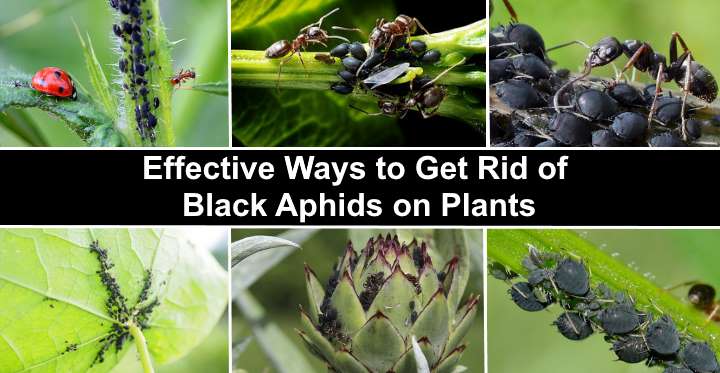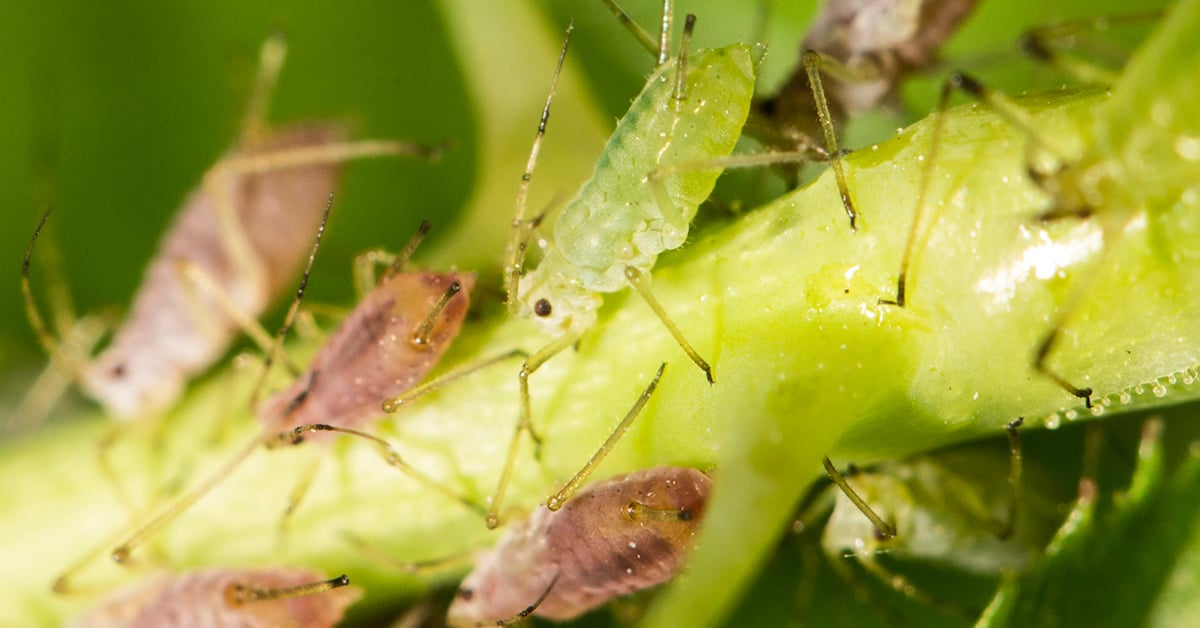What Are Black Aphids and Why Are They a Problem?
Black aphids are small, soft-bodied insects that feed on plant sap, causing significant damage to plants and crops. These tiny pests are typically found in clusters on the stems and leaves of infested plants, and can be identified by their dark color and pear-shaped bodies. Black aphids are notorious for their ability to transmit plant viruses, which can have devastating effects on plant health and productivity. Additionally, they secrete a sticky substance called honeydew, which attracts other pests like ants and wasps, further exacerbating the problem. If left unchecked, black aphid infestations can lead to stunted growth, curled or distorted leaves, and reduced crop yields. Effective management of black aphid populations is crucial to prevent these negative impacts and ensure healthy plant growth. Understanding the life cycle of black aphids is essential in developing a comprehensive control strategy. Black aphids can reproduce rapidly, with females giving birth to live young, and can complete their life cycle in as little as 7-10 days. This rapid reproduction enables them to quickly colonize and overwhelm plants, making prompt action necessary to prevent infestations from getting out of hand. By recognizing the signs of black aphid infestations and taking proactive steps to control their populations, gardeners and farmers can minimize the risks associated with these pests and maintain healthy, thriving plants. For those seeking to get rid of black aphids, a combination of organic and integrated pest management methods can provide effective solutions.
Identifying Black Aphid Infestations: Early Warning Signs
Early detection is crucial in controlling black aphid infestations. Recognizing the common signs of infestation can help gardeners and farmers take prompt action to prevent the spread of these pests. One of the most obvious signs of black aphid infestation is the presence of curled or distorted leaves. As black aphids feed on plant sap, they can cause leaves to become misshapen or curled, which can lead to reduced photosynthesis and stunted growth. Another common sign of infestation is the presence of sticky honeydew droplets on the leaves or stems of plants. Black aphids secrete this sweet, sticky substance as they feed, which can attract other pests like ants and wasps. The presence of ants or wasps around plants can be an indication of a black aphid infestation. Additionally, black aphids can be found in clusters on the stems and leaves of infested plants, often accompanied by a white, cottony substance called aphid wax. By monitoring plants regularly for these early warning signs, gardeners and farmers can identify black aphid infestations before they get out of hand and take steps to get rid of black aphids using a combination of organic and integrated pest management methods.
How to Get Rid of Black Aphids: Organic and Integrated Pest Management Methods
Controlling black aphid populations requires a multi-faceted approach that incorporates a combination of organic and integrated pest management methods. One effective strategy is to introduce natural predators, such as ladybugs and lacewings, which feed on black aphids and can help reduce their numbers. Another approach is to use neem oil and insecticidal soap, which can be applied directly to plants to kill black aphids. Practicing good garden hygiene is also essential in preventing the spread of black aphids. This includes removing weeds, disposing of infested plants, and sanitizing gardening tools to prevent the transfer of black aphids to healthy plants. Additionally, maintaining a healthy and balanced ecosystem can help prevent black aphid infestations. This can be achieved by promoting biodiversity, using compost to improve soil health, and avoiding the overuse of chemical pesticides. By combining these methods, gardeners and farmers can effectively get rid of black aphids and prevent their populations from rebounding. It’s essential to remember that black aphids how to get rid of them requires patience, persistence, and a willingness to adapt to changing circumstances. By staying vigilant and proactive, it’s possible to minimize the damage caused by black aphids and maintain healthy, thriving plants.
Using Insecticides: Chemical Control Methods for Black Aphids
In addition to organic and integrated pest management methods, chemical control methods can be effective in getting rid of black aphids. One common approach is to use pyrethrin, a natural insecticide derived from the flowers of the pyrethrum daisy. Pyrethrin is toxic to black aphids and can be applied directly to plants to kill them. Another option is permethrin, a synthetic version of pyrethrin that is also effective against black aphids. When using insecticides, it’s essential to follow label instructions carefully and take necessary safety precautions to avoid exposure. This includes wearing protective clothing, avoiding spray drift, and ensuring that the insecticide is applied at the recommended rate. It’s also important to note that chemical control methods should be used in conjunction with other methods, such as introducing natural predators and practicing good garden hygiene, to prevent the development of resistance in black aphid populations. By combining chemical control methods with other approaches, gardeners and farmers can effectively get rid of black aphids and prevent their populations from rebounding. Remember, black aphids how to get rid of them requires a multi-faceted approach that incorporates a range of control methods.
Companion Planting: A Natural Way to Deter Black Aphids
Companion planting is a natural and effective way to deter black aphids from infesting nearby plants. This approach involves planting certain species alongside each other to create a beneficial relationship that can help repel pests. For example, marigolds and basil are known to repel black aphids, making them ideal companion plants for gardens and crops. The strong scent of these plants can confuse or deter black aphids, reducing the likelihood of infestation. Other plants, such as garlic and chives, can also be used to repel black aphids. By incorporating companion planting into their black aphid control strategy, gardeners and farmers can create a more balanced and resilient ecosystem that is less susceptible to infestation. Additionally, companion planting can help reduce the need for chemical pesticides, making it a more environmentally friendly approach to black aphid control. By combining companion planting with other methods, such as introducing natural predators and practicing good garden hygiene, gardeners and farmers can effectively get rid of black aphids and prevent their populations from rebounding. Remember, black aphids how to get rid of them requires a holistic approach that incorporates a range of natural and integrated pest management methods.
Resistant Varieties: Growing Plants That Are Less Susceptible to Black Aphids
Growing plant varieties that are resistant to black aphids is an effective way to prevent infestations and reduce the need for pest control methods. This approach involves using genetic engineering and traditional breeding techniques to develop plants that are less susceptible to black aphid infestations. For example, some plant varieties have been bred to produce chemicals that repel or kill black aphids, while others have been engineered to have physical barriers that prevent black aphids from feeding. By growing resistant varieties, gardeners and farmers can reduce the risk of black aphid infestations and minimize the damage caused by these pests. Additionally, resistant varieties can help reduce the reliance on chemical pesticides, making them a more environmentally friendly option for black aphid control. When combined with other methods, such as introducing natural predators and practicing good garden hygiene, growing resistant varieties can be a key component of a comprehensive strategy for getting rid of black aphids. By incorporating resistant varieties into their black aphid control strategy, gardeners and farmers can create a more resilient and sustainable ecosystem that is better equipped to withstand black aphid infestations. Remember, black aphids how to get rid of them requires a multi-faceted approach that incorporates a range of innovative and effective methods.
Monitoring and Trapping: Ongoing Management of Black Aphid Populations
Ongoing monitoring and trapping are crucial components of an effective black aphid control strategy. By regularly monitoring plants for signs of infestation, gardeners and farmers can catch black aphid populations early, reducing the risk of damage and the need for more intensive control methods. Sticky traps and yellow traps are two effective tools for monitoring and trapping black aphids. Sticky traps, coated with a sticky substance, capture black aphids as they attempt to fly away from infested plants. Yellow traps, which are often used in conjunction with sticky traps, attract black aphids with their bright yellow color and capture them with a sticky surface. By using these traps, gardeners and farmers can identify areas of high black aphid activity and target their control efforts accordingly. Additionally, monitoring and trapping can help prevent black aphid populations from rebounding, reducing the need for repeated control efforts and minimizing the risk of resistance to control methods. By incorporating monitoring and trapping into their black aphid control strategy, gardeners and farmers can create a more sustainable and effective approach to getting rid of black aphids. Remember, black aphids how to get rid of them requires a proactive and multi-faceted approach that incorporates ongoing monitoring and trapping.
Preventing Re-Infestation: Long-Term Strategies for Black Aphid Control
Preventing re-infestation is a crucial aspect of effective black aphid control. By implementing long-term strategies, gardeners and farmers can reduce the risk of black aphid populations rebounding and minimize the need for repeated control efforts. One key strategy is crop rotation, which involves rotating crops to break the black aphid life cycle and reduce the buildup of aphid populations. Removing weeds, which can harbor black aphids, is another important step in preventing re-infestation. Additionally, maintaining a healthy and balanced ecosystem through the use of beneficial insects, such as ladybugs and lacewings, can help to naturally regulate black aphid populations. By incorporating these strategies into their black aphid control plan, gardeners and farmers can create a more sustainable and effective approach to getting rid of black aphids. Remember, black aphids how to get rid of them requires a proactive and multi-faceted approach that incorporates long-term strategies for preventing re-infestation. By taking a holistic approach to black aphid control, gardeners and farmers can reduce the risk of re-infestation and create a healthier, more resilient ecosystem.





